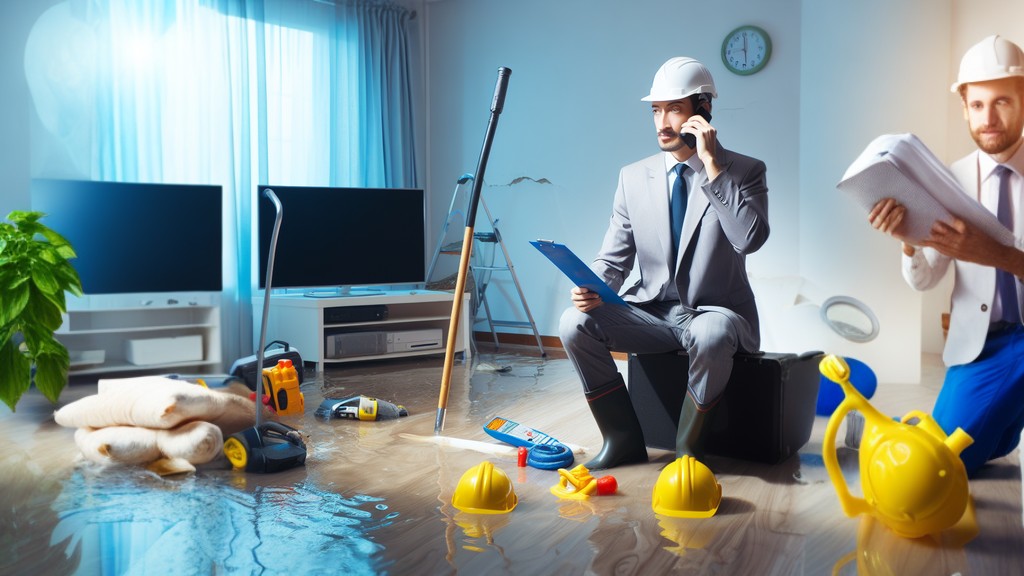Water damage is a homeowner’s nightmare, striking when least expected and capable of causing extensive harm to your property. Whether it’s a burst pipe, a leaking roof, or a natural disaster, the key to minimizing the impact of water damage lies in a prompt and efficient water damage extraction process. In this guide, we’ll explore the intricacies of water damage extraction, the methods employed, and the critical steps involved in ensuring a thorough restoration.
Understanding the Water Damage Removal Process
The journey to restoration begins with a comprehensive assessment of the water damage. Professionals initiate this process by identifying the source of the water, the affected areas, and the extent of the damage. The primary goal is to act swiftly to prevent further harm and to formulate an effective strategy for water damage extraction.
One of the fundamental methods in the water extraction process is the use of specialized equipment like pumps and vacuums. These tools facilitate the swift removal of standing water from various surfaces such as carpets, hardwood floors, and walls. The urgency in this step cannot be overstated, as standing water not only poses an immediate threat but also becomes a breeding ground for mold and other secondary issues.
Also Read: Exploring the Water Damage Extraction Process: Methods, Costs, and Companies
Water Extraction Methods: A Closer Look
The water extraction method employed depends on the nature and severity of the water damage. For smaller-scale incidents, professionals might use pumps and wet vacuums to extract water efficiently. However, in more extensive cases, advanced techniques such as structural drying become necessary.
Structural drying involves the use of dehumidifiers and high-powered fans strategically placed to expedite the drying process. This not only removes visible water but also targets hidden pockets, preventing the onset of mold and further structural damage.
Determining the Permanence of Water Damage
A common concern for property owners is understanding whether the water damage is permanent. Signs of irreversible damage include discolored or warped surfaces, persistent odors, and the growth of mold. Professionals assess the severity of the damage by considering factors such as the type of water involved (clean, gray, or black), the duration of exposure, and the affected materials.
Swift action is crucial to minimizing the risk of permanent damage. The longer water remains, the higher the likelihood of structural issues and the development of hazardous conditions. Thorough water damage extraction significantly reduces these risks and lays the foundation for effective restoration.
Steps in Removing Water Damage

The process of water damage extraction encompasses several key steps aimed at thorough removal and comprehensive restoration:
- Assessment: Begin by conducting a thorough assessment of the water damage. Identify the source, the affected areas, and the severity of the damage to form a tailored plan of action.
- Water Removal: Utilize pumps and vacuums to swiftly remove standing water. Speed in this step is crucial to prevent further damage and reduce the risk of mold growth.
- Drying and Dehumidification: Employ dehumidifiers and powerful fans to accelerate the drying process. This step is vital to prevent secondary damage and ensure a complete restoration.
- Cleaning and Sanitizing: Thoroughly clean and sanitize affected areas to eliminate contaminants and bacteria. This step is essential for creating a safe and habitable environment.
- Restoration: Repair and restore damaged structures and materials to their pre-damage condition. This may involve replacing drywall, repairing flooring, or addressing any structural issues.
Incorporating
When faced with water damage, time is of the essence. Locating reliable water damage extraction near me ensures a prompt response from professionals. Understanding various water damage extraction methods and associated costs is crucial for making informed decisions during the restoration process.
Several water damage extraction companies offer residential services, implementing specialized protocols like the servpro water damage cost estimation. Adhering to established water damage restoration protocols guarantees a comprehensive and effective restoration process.
Also Read: Commercial Water Clean Up: Essential Steps and Services
Conclusion
Navigating the challenges of water damage demands a strategic and systematic approach. The water damage extraction process is pivotal, ensuring the removal of water and the successful restoration of affected spaces. By understanding the methods, costs, and considerations involved, property owners can make informed decisions, turning a potentially devastating situation into a manageable restoration process.










